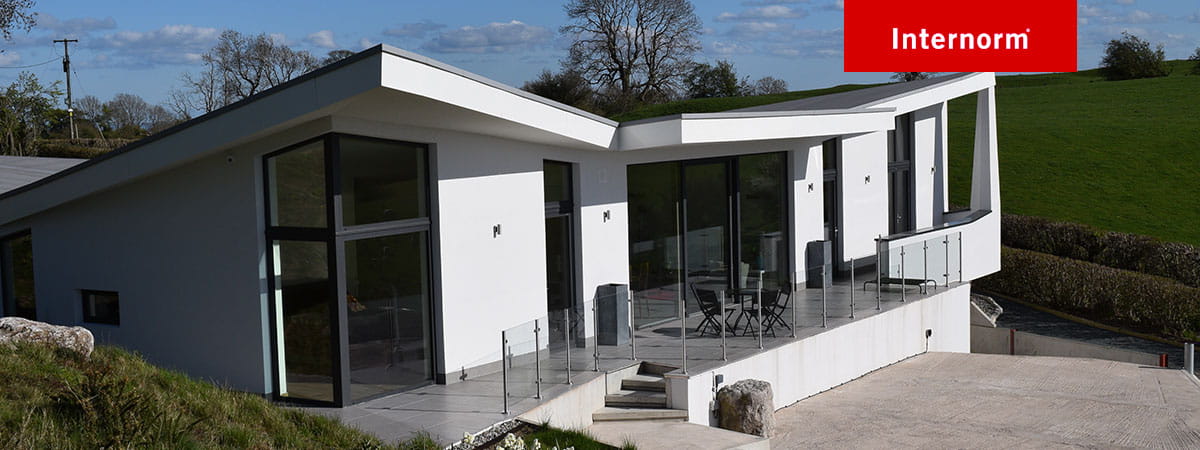
Internorm Achieving Passive House (Passiv Haus)
Passive House Windows: Dual Capacity
In passive housing the windows play an essential role for two reasons one they can allow for massive heat loss in large glazed surfaces, and at the other end massive heat gain due to solar transition. Internorm's highly thermally insulating windows combat this issue of thermal loss and gain through its incredible thermal insulating glazing with its passive house glazing aching Ug Values of up to 0.4 W/m2K.
Essential principles for the construction of passive house windows:
- Highly thermally efficient glazing
- Highly thermally insulating frames
- Thermally optimised composite edge
- Thermally insulated frames
What is important for passive houses?
The key to passive housing is utilising and optimising existing energy in your home: reducing thermal loss and at the same time increasing your homes thermal gain. To just throw a selection of passive house accredited items into a home is not enough to ensure a passive house construction standard: A passive house is not a selection of passive house items it is much more than that, it is an integrated relationship between all of these items to satisfy three basic demands:
- Heating demand < 15 kWh/m2a
- Primary energy demand (Heating/Warm Water/House Appliances) < 120 kWh/m2a
- Pressure difference air exchange n50 < 0.6 h-1, i.e. at a pressure difference of 50 pascal the air flow must be less than 60 % of the building's volume per hour.
A passive house needs a completely impenetrable outer shell that energy can only escape from in a regulated way, with incredibly thick thermal insulation with integrated ventilation in which allows air to flow both inside and out directions: Outside air is drawn into the building through underground pipes, which is in turn heated by the earth, and passed to the heat recovery system.
In the recovery system, the heat energy from the used air is transfer to the fresh, filtered, cold air using a heat exchanger. So here the heat energy from the used air is indeed utilised instead of being lost which would normally be the case.
After the new fresh air is given heat energy in the heat transferor, air is guided around your home to provide heat all year round, and distributed with special nozzles in order to avoid draughts. Unwanted air is sucked out of sanitary areas and the kitchen, in order to avoid the spread of unpleasant smells throughout the house.
